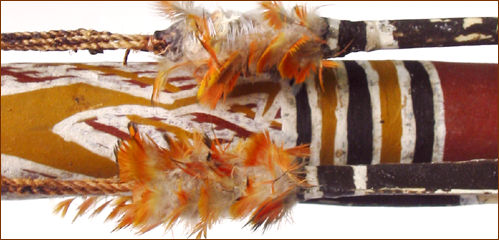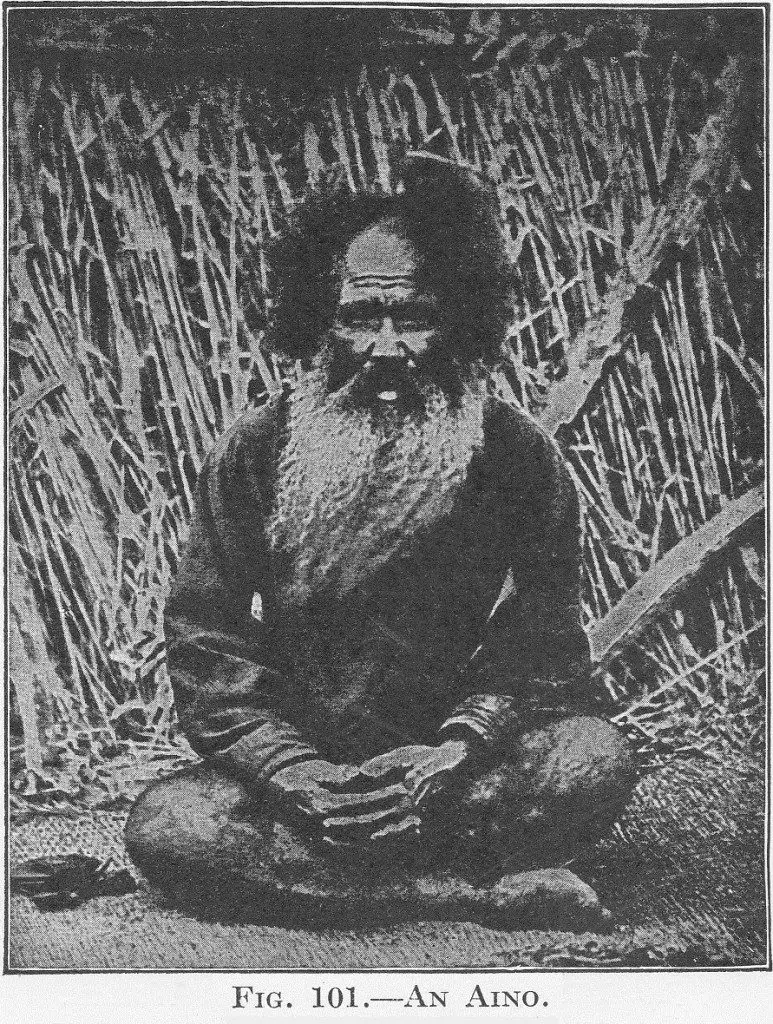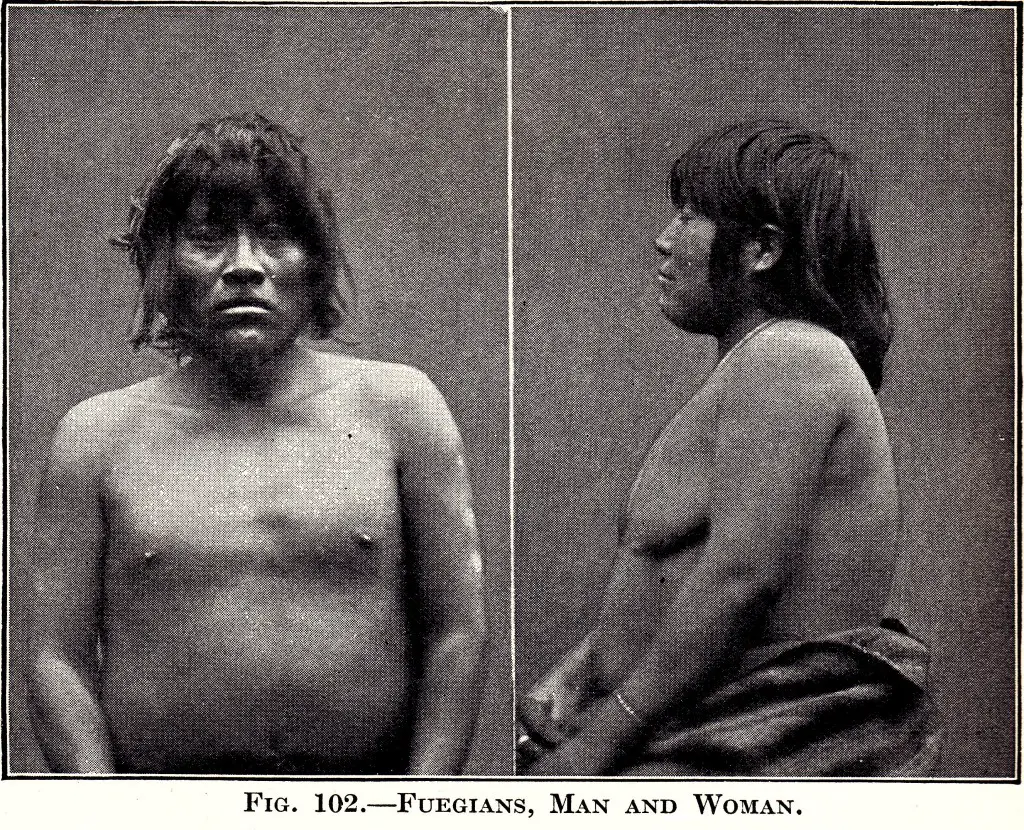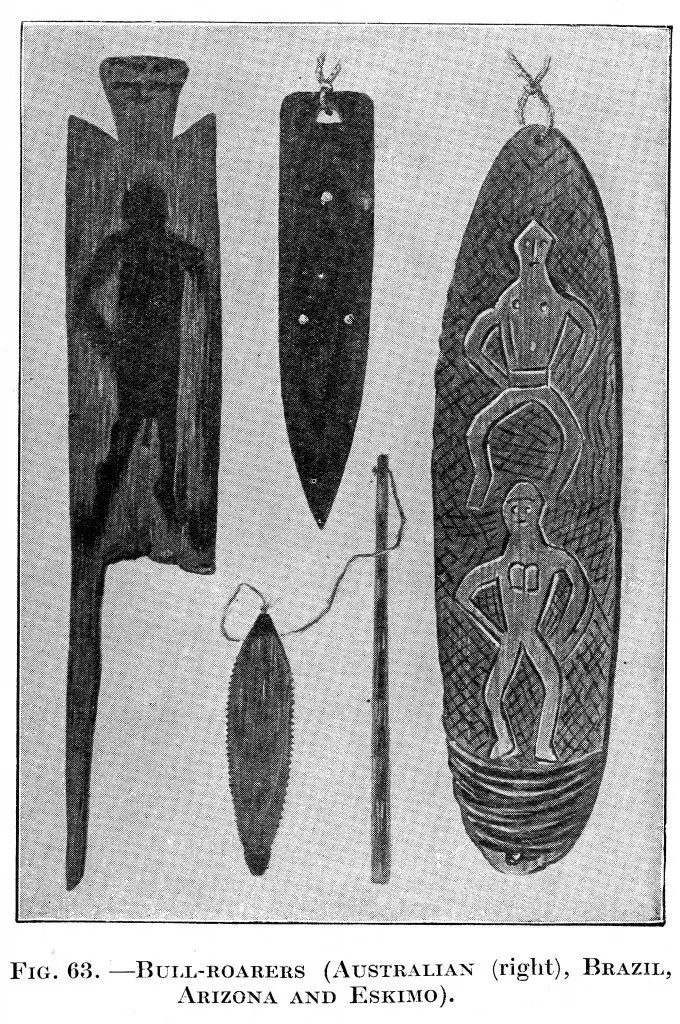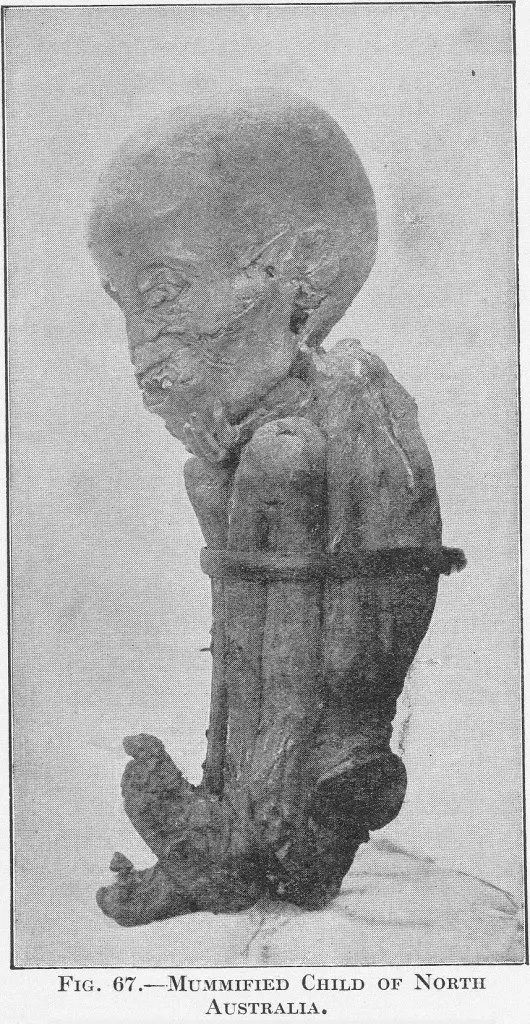24th March 2014
By Steven Strong
Contributing Writer for Wake Up World
Warning: Aboriginal and Torres Strait Islander readers are warned that this article contains images of deceased persons.
During 2011 I wrote over a dozen articles for Australia’s highest selling Original weekly newspaper, the National Indigenous Times. My most indepth article was selected by the editor, Stephen Hagan, as the major story for the Wednesday November 16, 2011 edition and was featured in “The Big Read”. Stephen was convinced our belief that “modern mankind originated in Australia” is an elemental part of Original Lore and history, and felt this article shed a different and venerable light on an ancient narrative and ancestry. He not only selected our article as a feature, but openly endorsed our research and central theme in his weekly editorial:
“Steven Strong, a regular contributor to the National Indigenous Times, provides a wonderful Big Read feature article on what he believes is evidence that modern mankind originated from Australia. I’ve been advocating this theory for as long as I can remember, in line with what’s been passed on to me through the generations for eons”.
After writing that article, Evan and I moved on to other fields of research and bid the evolutionary theories of Dr. Hermann Klaatsch (1863-1916) a not so fond farewell; we felt his contributions were complete and there were ‘greener pastures’ to explore. It was only after completing a recent overview of the site that another respected Australian academic, Frederic Slater, claimed to be “Australia’s Stonehenge” did memories of Klaatsch’s earlier expeditions return.
Both Slater and Klaatsch’s work suggested an Original ancestry for the first modern humans, both were convinced there was a link between ancient Aboriginals and Egyptians, and both believed the First Language began in Australia – and so it continues. The two scholars were separated by decades, first tongue, continents of birth, and attitude towards the First Australians, but were united by their academic standing and the rigour of their research in this field. Despite many instances of blatant racism apparent in Klaatsch’s accounts, it makes no difference whether you’re consulting Slater’s research or Klaatsch’s book, The Evolution and Progress of Mankind, the same historical truths are apparent in their work.
Undoubtedly, our more recent assessment of Slaters’ research deserves the corroboration that Klaatsch’s work certainly provides. So today, I will revisit the subject of my earlier article from National Indigenous Times, bringing more recent revelations, revisions and additions to the discussion. If you are interested in reading the original article, it is still available through the NIT website.
Original Research, Unexpected Inspiration
As I was cleaning out my classroom, rummaging through a few extremely ancient textbooks (some of which were written before I was born!), I came upon an old and tattered copy of “The Aborigines” by R.M. Gibbs.
Barely in tact, and obviously much the worse for wear thirty-five years after it was published, I randomly opened the book with the intention of briefly scanning the contents before consigning it to the bin. But there within the very first paragraph my eyes focused on, on the first page I opened, numbered twenty-five, was a piece of information I could scarcely believe was in print.
Our theory, which we assumed to be unique within non-Aboriginal circles, took years of consultation, research and lateral thinking to slowly cobble together. Never did we rely upon the opinions of scholars. But we should have, at least in one particular case, as it would have saved us five years of re-drafting, adding and subtracting, before finally convincing ourselves that Original people were the first oceanic mariners. If only we had opened to this page five years earlier, we would have shortened our journey and reluctantly accepted an age old truth: there are no original thoughts and all we ever do is repeat what others said before us.
According to Gibbs “one early theory suggested that the Aborigines did not migrate to Australia, but that mankind may have actually originated in the Australian region, and that subsequent human groups evolved from there. This was the theory put forward by Dr. Klaatsch”, who, as would be expected, was summarily dismissed by Gibbs and his colleagues.
Dr. Hermann Klaatsch – Scholar and Racist
Most assuredly, before Klaatsch’s study of Original tribes, and for some considerable time after, the analysis of Aboriginal habitation and culture was not deemed worthy of intensive academic or scientific interest – with one notable exception. During the time Klaatsch spent in research in Australia (1904-1906), Original people who still lived by the Old Ways were regarded as relics of primitive days and ways. Their stick-and-stone technology, culture and lifestyle were pronounced by a bevy of experts to be the last primitive vestiges of a supposedly disappearing race.
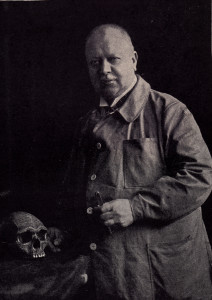 While on-site in Australia, Klaatsch’s intention was to assess whether his hypothesis was true, that the “skeletons and skulls” of “the Australian blacks” exhibit a “close similarity between… those of primitive man in Europe”. Their many shared physical characteristics Klaatsch was seeking to establish were “first pointed out by Professor Huxley”. This was the general theme of his research, as he, along with Huxley and others, was convinced there was a connection between Australia and many races throughout the globe. He was driven by the belief that there was great “importance of the Australian race in comparison with Anthropoids, the fossil man of European Stone Age, and the now existing races of mankind”.
While on-site in Australia, Klaatsch’s intention was to assess whether his hypothesis was true, that the “skeletons and skulls” of “the Australian blacks” exhibit a “close similarity between… those of primitive man in Europe”. Their many shared physical characteristics Klaatsch was seeking to establish were “first pointed out by Professor Huxley”. This was the general theme of his research, as he, along with Huxley and others, was convinced there was a connection between Australia and many races throughout the globe. He was driven by the belief that there was great “importance of the Australian race in comparison with Anthropoids, the fossil man of European Stone Age, and the now existing races of mankind”.
Klaatsch was aware, as any academic should be, never to use absolutes, especially when dealing with such an important topic. Even though he hedged his bets, he still expressed confidence that, in general terms:
We can only suggest a very broad outline of the dispersion of the human race from its hypothetical “cradle”. There probably were repeated out-pours over Africa and Asia, one wave of population falling upon another. The western stream we have recognised in the primitive Negroids of Africa, the gorilloid stem, and the final offshoot, the Neanderthal race. An eastern-flowing stream, after detaching the Australians, gave the Asiatic continent its first population, of which there are traces in various places today. Such are, for instance, the Aino, the original population of Japan, who remind us so strongly of the cruder European types and the Australians.
Klaatsch believed that the “cruder European types” and “Australians” are of the same original stock, and in substantiating his claim of physical similarities between races separated by thousands of kilometres of ocean, he chose to present a photograph of a traditional “Aino” (Ainu) male Elder seated beside a crude stick and bark shelter. The geography and backdrop in this picture was a secondary consideration. The aspects that immediately stand out are the thick lips, broad nose, curly black hair and every other facial feature of the person seated, was, for want of a better description, very Original.
When comparing facial features and physiques of early Homo sapien sapiens throughout the world, Klaatsch was not sure where some populations within Asia should be categorised as they appeared to sit outside what he considered the global norm: the Australian Original race. In fact, Klaatsch was so certain the Aboriginals were the legitimate ancestors of all European and Indian races that he deduced any group that did not fit into his world map was even more ape-like and less sapien (wise) worthy than Australian Original people.
Klaatsch also theorised that one group may not just have stagnated at the bottom of the sapien ‘pile’, as did the “primitive” Original race, but partially regressed to an even more primitive ancestry. He felt the “Malays have in many respects the specific characters of the Mongoloid stem: the obliquity of the eyes (which is due to the development of the “Mongol fold”, a peculiarity of the upper eye-lid which is rarely found in Europe), the prominence of cheek-bones (which begins in the primitive Australian type), and the proportion of the limbs or shortening of the legs (a more or less parallel development to that of apes)”.
Although he investigated many diverse areas of research, some quite surprising, it was characteristic of Klaatsch to nearly always couch his findings in racist terms. When attempting to justify his belief as to the origins and traits of the “Australo-Caucasian” race, he found that it was “difficult to explain the differences in the development of hair on the head in various peoples. We have, it is true, some reason to think that the wavy hair of the Australo-Caucasian is the primitive type, and that the others diverge from this in all directions”.
Original Genes in America
When the question as to the origin of the Native American people was raised, Klaatsch’s suspicions were correct (in the broadest of terms) and, quite by accident, ahead of his time. In his world map, “the common stem of the Europeans, Hindus, and Australians” form the elevated tier of humanity’s evolution. However he is unsure of where the “side branch of the Australo-Caucasians” with which he includes “the Malays and Mongoloids” should be categorised.
Klaatsch mistakenly suggested a land-bridge was the most likely means used to leave Australia en route to America, but does admit that with the facts available that “the origin of the primitive population of America cannot yet be decided”. Ignoring these qualifications, he was not hesitant in proposing a likely scenario involving “a migration from Asia by a land-bridge across Europe”. He believes this passage is confirmed by the “many resemblances between the culture of the Eskimo and that of the Paleolithic man in France”.
In what only adds to the “puzzle”, Klaatsch acknowledged the whole issue of determining the most likely place of origin of the Native Americans was far from resolved. In particular, he found “the question is still full of puzzles, especially as regards the Yahgans of Tierra del Fuego, whose very primitive physical cultural features remind us of the lowest known races of the Old World; though no points of contact have yet been established”. Of course, exemplifying his racial bias, Klaatsch believed “the lowest known races of the Old World” began in Australia.
The problem Klaatsch faced here related to him not understanding that he was examining the skulls of two different races in America; the bones of the ancient Australian settlers, and many more remains sourced from a much later influx of Asian Homo sapien sapiens around 10,000 years ago.
That much earlier migration was evident in a photograph titled “Fuegians, Man and Woman”, which highlights both the dramatic variation in facial features and the obvious answer to the “question… full of puzzles”. The features of the two people were very similar to that of the Australian Aboriginal people: their lips and noses are distinctly broader, cheeks are more pronounced and they have wider and rounder skulls than the Native Americans. At the time of writing, Klaatsch was correct in observing “no points of contact have yet been established”. However, since his time of writing, many points of contact have been established — and they all radiate out from Australia.
Discovered by Dr. Dubois between 1891 and 1893 were of a group of Pithecanthropus skulls in Java, which according to an examination Klaatsch personally conducted, displayed “some peculiar features in which it is connected with the Australian type of cranium”. That tipped the scales; it was the final piece of evidence Klaatsch needed to justify three years on-site in direct anthropological study. He saw Java as a mid-point, one of the first obvious destinations for those exiting northern Australia. He was certain that the many common physical traits were “connected in one direction with the ancestry of the Australian and Tasmanian aboriginals (sic), and in the other direction with the fossil man of the European Stone Age”.
Stone Axes, Tools and Snakes
Not only did Klaatsch establish to his satisfaction the existence of Aboriginal anatomical features within many races, he also noticed a similarity in stone tool technology. However, he chose to add one proviso and re-established his familiar hominid ‘pecking-order’. Klaatsch advised wrote that “it is wrong to call the Australian Neolithic on account of the half-polished stone axes, which are scarce compared to the primitive stone implements”, just because they “offer some similarities with those of Paleolithic and Bolithic stages of stone technologies in Europe”.
With the hindsight of a century of subsequent archaeology, we can see that Klaatsch’s conclusions are wrong on two counts; such technology is neither scarce nor contemporaneous, it is bountiful and much older than Klaatsch suspected. A hand-held pebble chopper found by Angel John Gallard in the Snowy Mountains is “believed to be at least 60,000 years old”, and is possibly over 100,000 years old. Ground-edge axes have been found at Huon Terrace PNG (40,000 years old), Jaowyn Land NT Australia (35,500 years old), Sandy Creek QLD Australia (32,000 years old) and Malangangerr NT Australia (23,000 years old), while the oldest axe found outside Australia was found at Niah Cave, Sarawak, on the island of Borneo and is dated at around 15,000 years old. Of course none of this was known when Klaatsch came to his conclusion, and had he been aware of these facts he would have been compelled to reword his conclusion, substituting “abundant and more ancient” for the word “scarce”.
Klaatsch also nominated the same Australian source as the inspiration behind the Serpent mythology found in almost every Asian religion. He stated that “common belief of a powerful snake over the whole of Australia is important, regarding the origin in ancient religions of the Asiatic”. We agree with Klaatsch’s comparison and sequencing, but would broaden the horizon through the inclusion of the religions of all nations.
The one aspect of Klaatsch’s research that is as academically revolutionary now as it was then, was that he sought out evidence from a variety of disciplines in his attempt to establish the whole picture. Their hair, art, technology, bones, Dreaming stories about serpents, the many similarities between the ancient European languages and the Original tongues, even the way Aboriginal people climbed trees or used their big toe; nothing escaped his scrutiny, and all of it – and much more – was recorded during his stay in Australia between 1904-1906.
Speaking in Original Tongues
Of particular note within Klaatsch’s extensive record of the crossover of common words was the reason the Lutheran missionaries in Western Australia believed that the ancestors of the Original people (then under their ‘care’) were originally banished from Babylon. As naà¯ve as the explanation was, Klaatsch detailed the missionaries’ biblically inspired hypothesis as a means of justifying the shared belief amongst all the clergy, and Klaatsch, that the tribal tongues in this part of western Australia were similar to their German language – so similar that it could not be coincidental. The Lutheran priests believed that the reason their words were so alike was because the natives’ ancestors had sinned, wickedly and often, and when the Tower of Babel fell were caste out by their God to the place most distant and utterly God-forsaken — Australia.
But it isn’t just the German language that can source its beginnings to ancient Australia. Klaatsch went about deconstructing all European tongues, seeking commonality amongst the most basic words. He started with basic words because the need to express the most common objects, actions, emotions and concepts logically dictates that these ideas would be the focus of the first words spoken. And it was here, at the most fundamental level, that the Australian influence was the most apparent.
Klaatsch found that:
the Latin acqua, the English “water” (British and Irish ‘usk,’ and German “wasser” etc) which remind us of the constantly repeated “arra,” “warra” and “larra” of the Australian dialects…. The word “manda” (=hand) for instance, is found over a large area, and recalls the Latin manus…. No less striking is the resemblance of “bina’ (ear, leaf, feather) to the corresponding Latin word pinna. In Queensland I found the word “jepar” for liver, which in Greek is “hepar”: and Bradshaw, an authority on the Australians, gives “kaputa” for head (Latin caput) as used by a central Australian tribe…. The word “manda” (=hand), for instance, is found over a large area, and recalls the Latin manus (and the English and German “hand”). In the word “mera” (compare “woomera,” the original of “boomerang”) or “mara” we see some affinity to the Greek meros (=member).
Ancient Egyptians in Australia and Vice Versa
Any mention of the Australian boomerang – of which twelve were found in Tutenkamen’s Tomb and all with recognized Original motif’s and designs – brings into focus the recurring ancient Egyptian connection. Klaatsch was certainly aware of the extensive links to ancient Egyptian customs, but had no appreciation of the nuances or the equality of cultural parties, which was never part of his package.
Klaatsch was aware that there was a wide variety of mummification processes apparent throughout Australia, but alas, he could not contain his ethno-centric bias in his description of it, referring to the Original people as “primitive” and “savages”. It should be noted, however, that this was likely a common practice among Europeans in 1890’s Australia.
The practice was, with the aid of certain spices (cedar-resin etc.), carried to a high pitch of perfection amongst the ancient Egyptians. Amongst the Australian savages we find it in its crudest and most primitive form. The body of the dead is allowed to decompose until the external skin peels off. The body is then allowed to get thoroughly dry, and the process is assisted by putting it on a platform and lighting a fire underneath. The intestines are first removed. At least, I found this done in the north of Australia, though the first Australian mummy discovered, in 1854, and sent to Europe by Sir George Grey, had not these organs removed. The apertures of the body had been carefully closed-partly sewn and partly stopped up with emu feathers-as if to keep the soul inside the body. In Northern Queensland, from which I bought a mummy…
In that passage however, Klaatsch makes note of different types of mummification at locations around Australia, which contradicts his assertion that the practices evident in Australia were the “most crudest and primitive form” of mummification. If that was the case, the expectation would be that the techniques evident in Australia were far less diverse, appearing in only its simplest form. What Klaatsch did not know was that mummification took place all over the country – both in simple rituals and incredibly complex ceremonies.
Understandably, Klaatsch did not have access to the mummified corpse, along with a canoe used in these rituals, which was stolen from Darnley Island (Torres Strait) in 1875. Renowned medical scientist, Sir Ralph Cilento, examined the corpse at length, and concluded that the incisions and method of embalming were the same as those employed in Egypt between the 21st and 23rd dynasties — over 2,900 years ago.
Apart from increasing the tally to four different types of mummification evident in Australia, if the mummy Cilento examined was “the same” as those found in Egypt 2,900 years ago, the similarities and sophistication evident at Darnley Island defy any notion that only the crudest and most simplistic form of mummification took place in Australia. In reality, the exact opposite is actually true.
We are of the belief that so much wisdom, technology and culture originated in Australia and was given unconditionally to ancient Egyptians, who came to this country as students of their Original hosts. They came seeking esoteric wisdom and knowledge of the Divine and Dreaming, and mummification is but one small part of that knowledge – a greater gift that Klaatsch could never comprehend. The Original Australians were anything but “crude”, but his strident bias toward that racist belief left him no room to manoeuvre. He could see some of the trees, but never the forest.
Another Victim to Cultural Conditioning
There are many races related to Australian Aboriginals, and this is the place (and race) where culture and spirituality began; that completes the broad areas of agreement between Klaatsch’s theories and ours.
As for the rest…. some of the things he wrote in his book The Evolution and Progress of Mankind are forgiveable, many things he stated are unbelievable, and some of it is extremely offensive. Klaatsch perceived an Aboriginal culture that possessed nothing of value. He explained how the spread of Australian culture took place as a simple case of placing one foot in front of the other when walking over land-bridges that connected Australia to Indonesia and beyond. Of course we now know this is false; there were expanses of over 100 kms (62 miles) of ocean at the lowest sea-levels to sail across. Granted, despite his attitude toward the Original people, Klaatsch was consistent and scrupulous in his work. But past that point he could only see a primitive group of savages stagnating in an uncivilised country, too ignorant to develop the seed they spread throughout the world.
The reason why I have chosen to refer to Klaatsch’s research today is because, beneath the rampant racism, was a dedicated and impressive academic. Yes, the paper and book Klaatsch wrote are completely devoid of empathy, but any record of early contact with traditional Aboriginal people, regardless of prejudice, is invaluable. And to give credit where it is due, Klaatsch’s central premise – that of an Aboriginal origin for culture, language, religion and art, beginning first in Australia then spreading throughout the planet – was ahead of its time and barely understood by his contemporaries, in spite of his biased misconceptions. Regrettably, his cultural conditioning was too heavy a burden to bear, blinding him to a culture and people that should have been revered, but were often treated worse than dogs.
Paul Rivet: Different Approach, Same Result
Much to our surprise, and relief, Klaatsch’s publication does not stand alone. There was another academic who also proposed that the First Australians sailed to distant continents in ancient times: French physician and anthropologist, Paul Rivet (1876-1958). Although Klaatsch’s book was first published in 1923, and Rivet’s first book, which dealt with the classification and commentaries on Native American languages, was published in the same year, we believe it is reasonable to conclude that their publications were unknown to the other at the time they were written. Klaatsch’s death in 1916, his book being originally written in his native tongue, and lingering animosity towards all things German held by the French during the war years (and for some time after) severely limited the readership of the German anthropologist’s book outside his country of birth.
Paul Rivet was, on a personal and philosophical level, the diametric opposite of Klaatsch. His extensive studies and life-long commitment to the welfare and betterment of the native South American Indians was of such a calibre that he was chosen to be a French delegate to the United Nations in 1958. He was “famous for his studies of South American peoples”, and unlike Klaatsch, was a man with a strong social conscience. He had no trouble accepting the local Indigenous people as his equal, marrying a native Ecuadorian woman, and was quoted on many occasions insisting “all people can be united”. In contrast, Klaatsch saw life and its complexities from a different perspective – one where European man stands at the pinnacle of the ascending Homo sapien sapiens’ majesty, surveying all that scampers below. They have nothing in common bar a degree and the belief that Australian Aboriginal people were the first to colonise the planet. The chances of Klaatsch acknowledging real value in any Indigenous culture, let alone marrying a native woman, are less than that of hell freezing over – or alternatively, of The Eagles not staging another “final” reunion concert.
Rivet was meticulous when comparing language, customs and rituals, analysing bones and sanguineous features before announcing his conclusions. Rivet’s “poliracial thesis”, which was the term he coined to explain the original populating of America by people from Australia, was very influential and the centre of much consideration in the period between the two World Wars. He was, as was the case with Klaatsch, a pioneer in the revolutionary concept of field studies, and devoted six years (1901-1906) to studying the culture and language of Indians in the Andean Valley. “Rivet proposed a theory according to which South America was populated by settlers from Australia and Melanesia”, and the “first inhabitants of South America did not come from the north, but through Australia and Melanesia”. The central element of his theory proposes “that the dark skinned people…. crossed the Pacific Ocean in their canoes, and arrived in Central and South America, from where their descendants spread all across the Americas”.
The greatest surprise when searching for information relating to Rivet was not the unintended synchronicity Klaatsch and Rivet shared in shared both timing and theory, but that they were not alone in their insistence that Australia was the birth-place of modern man. Originally, we did assume that Klaatsch was a lone voice championing this unheard theory of modern humans originating in Australia; Rivet’s late inclusion, if for no other reason than his compassion and empathy for the people he studied, was a welcomed balance. And as was the case with Klaatsch, there were also colleagues of Rivet’s who subscribed to his point of view. “Among the scientists who have supported the theory of the Australian migrations are Mendes Correa and George Montandon”.
Singing an Ancient Song
Not a lone voice, nor a duet, but a chorus of authorities were singing the same Australian lyrics in the song of human origins. Two men of high repute and many degrees, researching at opposite ends of the globe, both concluded that Australian Aboriginals colonised foreign lands before others, and had the public support of their contemporaries. This suggests that our theory is neither radical nor new, rather it appears to be more an restatement of what others have discovered before.
So now, being aware of how many academics have reached the same conclusion we have, I wonder why all of this combined research was so cavalierly disregarded within mainstream academic circles?
In Australia, the works of these two men are no longer referenced. Once World War 2 came to a close, the whole discussion of modern humanity’s ancestry, along with their thoroughly crafted research and proposals, literally vanished from text, discussion and lecture. Despite compelling cases made by highly credentialed academics, all mention of that ‘alternative’ heritage – that Australian Aboriginal people were responsible for populating the far reaches of the globe – vanished from book and university and has never been raised again since. Apparently research is no longer worthy of discussion or critique, and seems destined to remain in a state of suspended indifference.
It appears that before World War 2 there were two archaeological camps at loggerheads over which the continent hosted the genesis of modern humanity. Africa or Australia? Where to look? Africa had long been the more popular choice; being blessed with a variety of geological conditions that go a long way towards preserving remains of the past, bones of all types have been found there. While in Africa in locations like the Rift Valley, the remains of earlier hominids were easily found and dated to be millions of years old. On the other hand, Australia is the oldest and driest continent and least conducive to maintain bone, wood and artefact, and until the rare and fortuitous combination of climatic and geographic conditions which facilitated the many discoveries at Lake Mungo in the mid 70’s, the entire country had returned little of meaningful archaeological interest and was (incorrectly) considered to be the equivalent to an archaeological wasteland.
These two highly regarded academics, Klaatsch and Rivet, are separate in so many respects. Standing in different continents, Klaatsch was analysing the cause, and Rivet, the effect. Irrespective of prejudice or circumstance their conclusions were identical: the First Australians were responsible.
That was yesterday. Today, despite many obstacles and a conservative academic climate, there are artefacts, bones, genes, Y Chromosomes, blood groupings and sites found within Australia, supplemented by the testimony of Ramindjeri Elders that ancient Original people circumnavigated the world, all of which contradict mainstream theories of human history and every Out-of-Africa theory of human evolution.
The Final Step
Of course, when I wrote parts of this article about two years ago, we knew nothing of Slater’s extensive research, the Standing Stones or the associated sites. As each day passes more papers are being written which call into question a shared African ancestry. Quite a few researchers are willing to walk half way up the road, but refuse to take the last step. While academics of today stand united in denying an African genesis, proposing an alternative is still one step further than most are brave enough to take. To do so would mean going against the prevailing culture of the academic status quo. Thankfully old-timers’ like Klaatsch, Rivet, Slater, Cilento, Huxley, Correa and Montadon took that step decades ago – and they headed toward Australia.
About the authors:
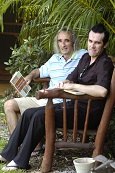 Steven Strong is an Australian-based researcher, author and former high school teacher. Together with his son Evan, his work is to explore the ancient story of the Original people, a narrative that was almost lost to aggressive European colonisation.
Steven Strong is an Australian-based researcher, author and former high school teacher. Together with his son Evan, his work is to explore the ancient story of the Original people, a narrative that was almost lost to aggressive European colonisation.
Edited and additional commentary by Andy Whiteley for Wake Up World.
This article © Wake Up World.

If you've ever found value in our articles, we'd greatly appreciate your support by purchasing Mindful Meditation Techniques for Kids - A Practical Guide for Adults to Empower Kids with the Gift of Inner Peace and Resilience for Life.
In the spirit of mindfulness, we encourage you to choose the paperback version. Delve into its pages away from screen glare and notifications, allowing yourself to fully immerse in the transformative practices within. The physical book enriches the learning process and serves as a tangible commitment to mindfulness, easily shared among family and friends.
Over the past few years, Wake Up World has faced significant online censorship, impacting our financial ability to stay online. Instead of soliciting donations, we're exploring win-win solutions with our readers to remain financially viable. Moving into book publishing, we hope to secure ongoing funds to continue our mission. With over 8,500 articles published in the past 13 years, we are committed to keeping our content free and accessible to everyone, without resorting to a paywall.

